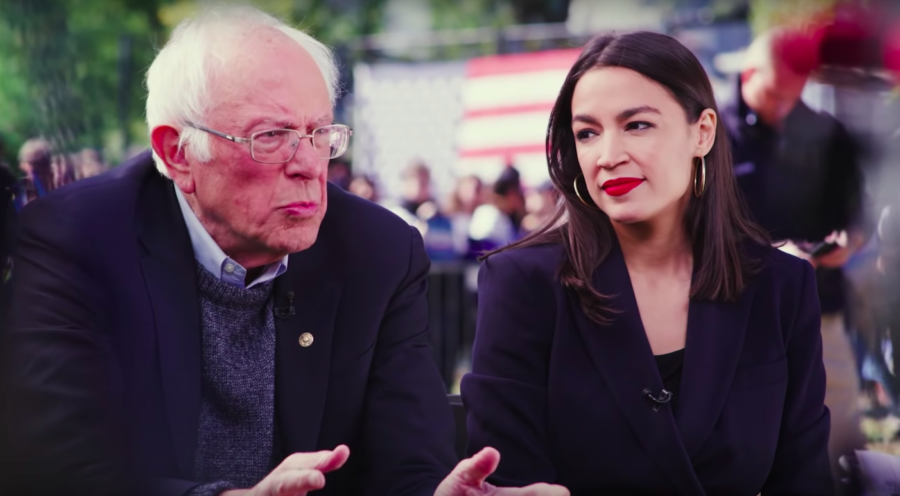Political television ads set to increase as caucus season nears
Sen. Bernie Sanders’ latest commercial airing in Iowa for his presidential campaign features Rep. Alexandria Ocasio-Cortez, who endorsed his bid for the presidency Oct. 19.
November 6, 2019
With the Iowa caucuses coming up, along with the 2020 election, many presidential candidates are starting to come out with television advertisements.
Elizabeth Warren’s campaign went up with her first ad early Monday in Iowa television markets.
Warren’s ad follows commercial time purchases by Pete Buttigieg, Joe Biden, Julián Castro and Bernie Sanders.
The Massachusetts senator’s commercial shows her growing up. She uses this as a backdrop to discuss the opportunities available to her in the past compared to the opportunities available to people today, adding that corruption has caused shrinking opportunities.
“We must root it out and return our democracy to the people,” Warren said in the ad.
Sanders’ most recent ad airing in Iowa features Alexandria Ocasio-Cortez, who endorsed Sanders last month.
Kelly Shaw, senior lecturer of political science, said even though the campaigns are using social media, they are spending a lot of resources on television ads.
“For older people, [television commercials are] still quite important,” Shaw said.
Nearly two-thirds of Iowa Democratic caucusgoers in 2016 were over the age of 45, according to CNN entrance polls.
Mack Shelley, Iowa State professor and chair of the political science department, also said the campaigns stress television advertisements due to the older population in Iowa.
“This explains why the money goes into TV,” Shelley said.
With Warren, Sanders, Buttigieg and Biden being in the double digits in polling in Iowa, Shelley said they are trying to score “bragging rights.”
“This is an effort to say our campaign has the best ideas,” Shelley said.
There may be a power-struggle for the top four spots in polling, but Shelley and Shaw said the overall goal for candidates is to differentiate themselves from one another.
“It’s an effort to reposition a candidate to be more appealing,” Shelley said.
Those in the lower range are starting to have a reality check. Kamala Harris has been working to have a stronger standing in Iowa, Shelley said.
Harris has moved more campaign workers to Iowa. There are many other candidates with lower polling numbers that may be hitting a turning point in their campaign due to the large sums of money that are being put into TV ads, Shelley said.
“We are apt to see fewer and fewer candidates,” Shaw said.
If the candidates in the lower tier of polling don’t step up their game with major shifts in the race underway, they may have to drop out, Shelley said.
“If you are in the zero, one, two [or] three [percent range of polling] you are guaranteed to get clobbered,” Shelley said.
Despite the potential dropping out of candidates on the way, Shelley said there are many more advertisements to come, and these advertisements are just the beginning.
“We are going to be bombarded by the airwar,” Shelley said.

















